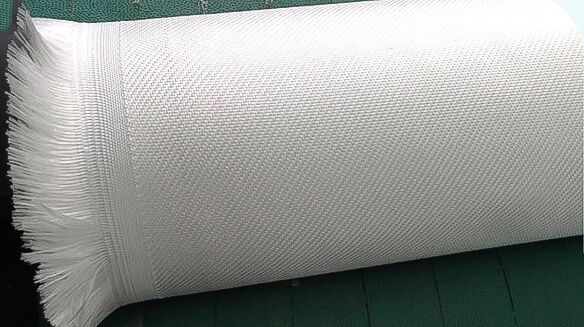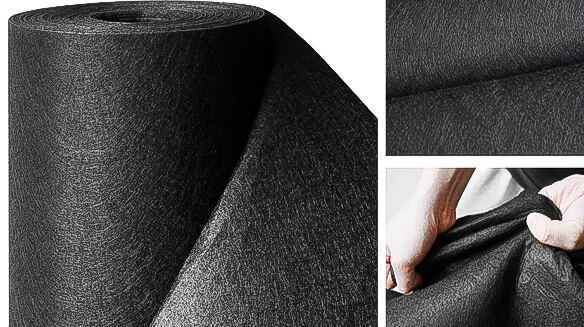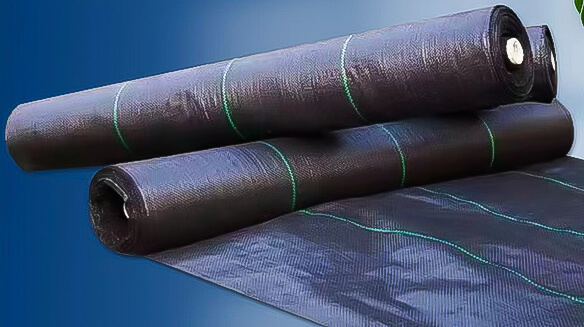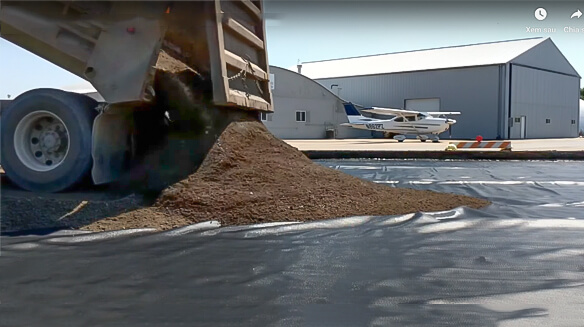Contents
- What Are The Disadvantages Of Geotextiles: Things to Know
- The Role of Geotextiles in Civil Engineering and House Construction: Advantages and Disadvantages
- The Advantages and Disadvantages of Using Geotextiles in Landscape Design
- Woven Geotextiles: Key Advantages and Disadvantages in the Realm of Civil Engineering
- Understanding the Disadvantages of Geotextiles: A Comprehensive Assessment for Civil Engineering
- Conclusion
- FAQs
What Are The Disadvantages Of Geotextiles: Things to Know
The Role of Geotextiles in Civil Engineering and House Construction: Advantages and Disadvantages
Knowing the pros and cons of geotextiles can guide project decisions. Often made from synthetic fibers, geotextiles boast numerous benefits. They play a key role in civil engineering, notably in retaining wall construction, wall drainage improvement, and soil erosion prevention. Yet, they do have challenges worth noting.
Geotextiles perform vital functions in civil engineering. They separate, filter, reinforce, drain, and protect. These actions stabilize the soil significantly. In retaining walls, geotextiles distribute pressure and boost stability. They reinforce the soil to prevent slippage and secure structural integrity. These benefits extend to wall drainage. Geotextiles allow water passage but contain soil particles. This reduces erosion risk.
In-house construction and geotextiles enhance durability. They improve water drainage in foundations, terraces, and roofs. But the advantages don’t end there. Geotextiles blend with other materials like geosynthetic clay. These combinations cut down permeability and seal construction gaps.
Comparing the Advantages and Disadvantages of Geotextiles in Different Civil Engineering Applications
Yet, geotextiles do have downsides. They excel in various applications, but challenges arise too. Synthetic fibers in geotextiles might degrade in certain environments. This can affect their long-term performance. Also, careless handling during installation can damage them. This puts the barrier’s effectiveness at risk. Furthermore, geotextiles respond differently to various soil types. A detailed soil study becomes necessary before choosing them.
Understanding these drawbacks along with the benefits can maximize geotextiles’ potential. Careful planning and soil condition knowledge can exploit their benefits fully. They not only reinforce structures and prevent erosion but also improve wall drainage. The key is to strike a balance. Use what geotextiles offer and surmount their challenges for successful construction.
The Advantages and Disadvantages of Using Geotextiles in Landscape Design
Geotextiles, with their numerous benefits, have revolutionized landscape design. However, it’s vital to understand the pros and cons that come with their use. Commonly used as landscape fabrics, geotextiles are a type of geosynthetic. They improve soil structures, curb erosion, and assist in landscape designs. But their performance relies on their type, either woven or non-woven.
Advantages of Geotextiles
Soil stabilization is the main advantage of using geotextiles in landscape design. They’re particularly helpful in hillside gardens where slopes increase the risk of erosion. By efficiently laying geotextiles, they secure the soil grip and prevent soil particle wash-away. This makes them the go-to material for designs in erosion-prone areas and significant construction projects requiring soil stabilization.
Geotextiles, particularly woven ones, are also great for separating different soil layers. This function keeps distinct soil types from mixing. It stops fine grains from moving into coarser-grained layers. Often, geogrids pair with geotextiles for enhanced performance. Comprehensive soil protection is undoubtedly a prime geotextile advantage.
Disadvantages of Geotextiles
However, we need to balance these pros with geotextile cons. While they have clear benefits, challenges exist that can affect their effectiveness. Installation is one notable drawback. Laying landscape fabric across large areas is labor-intensive and requires precision to avoid gaps that could lead to weed growth.
Maintenance and lifespan are other issues. Though robust and resilient, geotextiles deteriorate over time due to weather exposure, reducing their performance. Regular maintenance or replacement might be necessary. Performance tests might also be needed.
The last disadvantage is that geotextiles can’t entirely eliminate weed growth. Tiny weed roots can penetrate the fabric, forming a hard-to-eradicate web-like structure. Decaying organic matter can also accumulate on top of the fabric, providing fertile ground for weed seed germination.
In summary, geotextiles are invaluable in landscape design for their benefits like soil stabilization, erosion control, and weed growth prevention. However, considering their cons, professionals need to carefully determine their use based on specific landscape requirements and longevity considerations.
Woven Geotextiles: Key Advantages and Disadvantages in the Realm of Civil Engineering
Woven geotextiles play a key role in civil engineering projects, especially in soil reinforcement. Made from robust synthetic fibers, they’re indispensable for large-scale engineering tasks. Their strength allows them to prevent soil erosion effectively.
Despite the benefits, woven geotextiles also face several challenges. They can negatively impact the environment during production and disposal. Continuous interaction with soil can also degrade their durability over time.
Strength stands out as a notable advantage of woven geotextiles. It often separates successful, sustainable infrastructure from unstable, potentially hazardous ones. The compression strength of woven geotextiles helps maintain soil structure even under immense pressure.
However, woven geotextiles aren’t without disadvantages. Over time, their efficiency may decline due to constant exposure to soil. They can also harm the environment during manufacture and disposal. Therefore, we need to handle these materials cautiously to minimize potential environmental damage.
Today, woven geotextiles form a cornerstone of civil engineering. They work with the soil to strengthen construction project foundations. Still, we must recognize the challenges they pose. Addressing these issues is vital to ensure sustainability.
Woven geotextiles offer a substantial way to control soil on a large scale. They represent a significant step in civil engineering, thanks to their strength. However, we must consider the disadvantages too. The decline in efficiency over time and potential environmental risks remind us of the ongoing refinement and innovation needed in engineering.
In conclusion, woven geotextiles bring considerable benefits to civil engineering projects. They contribute immensely to infrastructural advancement. Nonetheless, we can’t overlook the challenges and potential disadvantages these products present. This balance motivates us towards continuous improvement and innovation. It drives the push-pull dynamic that signifies true progress.
Geotextiles Excel in Landscape Projects: Balancing the Advantages and Challenges
Balancing the pros and cons of geotextiles is key in landscaping. These versatile geosynthetics are great in soil and water management. However, users need to understand their downsides for the best results.
Geotextiles boost eco-friendly practices. They help conserve soil and water resources. They cut down on erosion and enhance water quality. But they do have drawbacks, such as limits on the number of characters they can effectively support. Recognizing these can improve their use and promote sustainability.
A significant plus of geotextiles is their permeability. Water seeps through the soil, aiding plant growth. Yet, this becomes a downside when the soil is too wet and can’t absorb more water. Excess water could stress the geotextile. Thus, thorough soil and water assessment is crucial.
Geotextiles also have a role in weed control. They can suppress weeds effectively with the right fabric. However, non-woven geotextiles may fall short of weeds. Despite superior soil stabilization and filtration, their weed control may be less effective.
In civil engineering and housing, geotextiles have their pros and cons too. They stabilize soil and control erosion, but can’t replace traditional construction materials. It’s vital to understand these geotextiles well to use them effectively.
Knowing the implications and downsides of geotextiles is key. Landscape designers, civil engineers, and homeowners can make better use of these materials. They can balance the strengths and weaknesses of geotextiles. That way, they can achieve more successful and sustainable outcomes. After all, it’s all about balance.
Understanding the Disadvantages of Geotextiles: A Comprehensive Assessment for Civil Engineering
In civil engineering, we need to weigh the disadvantages of geotextiles. Even though these geosynthetics offer a range of benefits, they come with unique challenges too. This article will balance the pros and cons to clarify the use of geotextiles in construction.
Geotextiles are known for reinforcing soil. They add strength to the subsoil layer. Yet, a key downside is that they might not work well with all soil types. Their effectiveness can change based on soil characteristics. For instance, soils with lots of clay or silt could pose problems. This makes using them a tricky task in civil engineering and building projects.
The Impact of Environmental Factors on the Performance of Geotextiles
Additionally, woven geotextiles might not maintain their strength under tough environmental conditions. Over time, weathering could cause these materials to deteriorate, affecting their durability. Direct sunlight exposure can make woven geotextiles brittle, compromising their stability. This is a clear downside.
Unlike geomembranes, geotextiles can’t form a perfect seal. This could lead to leaks. Therefore, they might not be the best choice when you need a watertight barrier.
Challenges in the Installation and Maintenance of Geotextiles
In the field of landscape design, geotextiles come with their own set of drawbacks. Weed growth is one such challenge. At times, the geotextile fabric may not fully stop weeds from emerging, affecting the aesthetic look.
Maintenance is another downside of geotextiles. Regular checks are needed to ensure they’re working effectively, which increases maintenance costs. Plus, installing geotextiles can be labor-intensive and require skilled workers.
Cost Implications: A Potential Disadvantage of Using Geotextiles
The need for skilled labor to install geotextiles can inflate project costs. However, geotextiles also bring many advantages. They boost soil strength and longevity of structures, reduce soil voids, and ensure efficient drainage. In some instances, they can replace traditional methods of layering aggregate and soil, leading to substantial cost savings.
Despite certain drawbacks, geotextiles hold immense value in civil engineering and construction. They offer unique benefits, often unmatched by traditional methods. Recognizing these disadvantages and finding ways to mitigate them can lead to sturdy, cost-effective, and environmentally friendly construction solutions.
Conclusion
While they have many benefits, geotextiles also present certain challenges that civil engineers and contractors must consider. In civil engineering and housing construction, geotextiles offer benefits such as soil reinforcement, drainage improvement, and erosion prevention. However, their usage may not always be effective with all soil types, particularly those rich in clay or silt layers. Moreover, geotextiles may lose their durability under harsh environmental conditions and careful installation is required to prevent damage.
In landscape design, geotextiles help improve soil structures and curb erosion, but their maintenance and lifespan, as well as their inability to completely prevent weed growth, must be considered.
Lastly, the requirement for skilled labor to install geotextiles can inflate project costs. However, in some cases, they can replace traditional methods of layering aggregate and soil, leading to significant construction cost savings.
In conclusion, despite certain drawbacks, geotextiles play a crucial role in civil engineering and construction. They offer unique benefits that traditional methods cannot provide. Recognizing these disadvantages and finding ways to mitigate them can lead to sturdy, cost-effective, and environmentally-friendly construction solutions.
FAQs
1. What are the disadvantages of geotextiles?
The most commonly cited disadvantages include a high up-front cost, potential durability issues due to ultraviolet light exposure, and environmental concerns related to runoff that arises from polluted surfaces stemming from the use of the fabric material. Geotextiles also may present problems when installed during cold weather months, as low temperatures can lead to deterioration in some cases.
2. How long will a geotextile last?
The exact lifespan of any particular type of geotextile will vary depending on certain variables like quality of construction and surrounding installation conditions, however with proper installation and maintenance they can typically be expected to remain functional for at least 10 years under normal circumstances.
3. Are there other environmental impacts associated with installing geotextiles?
Yes; when exposed to contaminated sites, some types of faulty or aged fabrics can actually be a source for pollutants entering groundwater or surface water streams if not properly maintained over time – thus making it especially important for contractors & owners alike to make sure that any materials used meet necessary safety standards prior being deployed in such applications.
4. Does using geotextiles require specific tools or special training?
Yes; because many varieties require heat welding machines when constructing seams along seams between rolls which must be done by professionals who possess appropriate knowledge & credentials according to use industry best practices & legal parameters operating within the area being serviced/installed…Along the same lines – it is also recommended those individuals reviewing performance warranties have technical backgrounds so they know what kinds of questions should be posed to evaluate integrity structures constructed using said products before releasing payments etc.
Related posts:
How Do You Lay Geotextile Fabric? Geotextiles Install Guide














